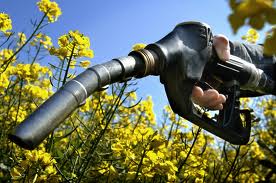Background
Transport remains a persistent challenge for reducing greenhouse gas (GHG) emissions on the island of Ireland, as elsewhere. In the Republic of Ireland (RoI), transport contributes almost 20% of total GHGs, compared to agriculture at about 30%, together accounting for half of GHG emissions. In Northern Ireland (NI) the transport sector is responsible for 21% and agriculture for 26%, again totaling almost half of all GHG emissions. For comparison, in the United States transport accounts for about 28% of GHG emissions, second only to electricity generation (33%) with agriculture at about 8% of GHGs. In the European Union (EU) Member States, transport is about 21% of GHGs, and agriculture is 9.8%.
While emissions from agriculture have largely stabilized over the past decade in Ireland, transport emissions have risen substantially. Between 1990 and 2009, transport emissions (including aviation) rose by 27% within the EU Member States; in Ireland they rose by 176% for the same period, the second highest in the EU. The EU has set a target of a 60% reduction in transport by 2050, yet as of now there is expected to be a 35% increase in 2050 over 1990.
Fossil fuels, mainly oil, drive the GHG emissions from transport. Hope sprung up over the past two decades as researchers and policy makers, supported by environmental non-government organizations (eNGOs), embraced biofuels as an alternative for fossil-fuels. Biofuels are energy derived from renewable plant and animal materials. This was the golden apple. Unfortunately, it turned out to have a worm in it.
Role of biofuels in combating global climate change
The European Union (EU) and various countries adopted targets and legal mandates requiring that a certain percentage of fuel for vehicles be derived from biofuels. For example, the EU Biofuels Directive, 2003/30/EC, established the goal of reaching a 5.75% share of renewable energy in the transport sector by 2010; under the Renewable Energy Directive (RED), 2009/28/EC, on the promotion of the use of energy from renewable sources, this share rises to a minimum 10% in every Member State in 2020. Also relevant is the Fuel Quality Directive (FQD), which requires that the average life cycle GHG emissions of fuels for transport be reduced by 6% between 2010 and 2020. Note 1. The RED requires a supply of more renewable energy in transport while the FQD addresses the GHG intensity of particular fuels in transport. The more renewables the better; the less GHG emissions produced by fuels the better.
It was expected that biofuels would provide the mainstay for meeting both targets.
An unintended consequence of the policy and application is that land used formerly for growing crops for food was converted to use for growing crops, e.g., corn, sugar cane and vegetable oil, for biofuels. As crops for biofuels offered substantially more income, large tracts of farming land were diverted from food to fuel, with resulting spikes in food prices and shortages. This is a “direct land use change” that needs to be accounted for in assessing the sustainability of biofuels.
There are more complications with biofuels. Others will see the void in food production and jump in to make up for the food shortage. Unfortunately, land is limited so these entrepreneurs often take undeveloped land, even forested land, and converted it to farm land for food crops. But that undeveloped or forested land was absorbing carbon from the air and reducing GHG emissions — the carbon sinks. When that land is converted for growing food crops, then less carbon is absorbed and more emitted to the atmosphere. Here we have an “Indirect Land Use Change” (ILUC), and it too needs to be accounted for when assessing whether biofuels truly are lowering GHG emissions. If they are not, then we need to rethink their usefulness for transport.
We now have a thoughtful report, commissioned by Greenpeace and BirdLife Europe, with support from Transport & Environment (T&E), the European Environmental Bureau (EEB), and produced by a Dutch consultancy, CE Delft, that charters a path through the biofuel terrain: Sustainable alternatives for land-based biofuels in the European Union – Assessment of options and development of a policy strategy. It demonstrates that Europe can effectively meet its current renewable energy target in transport without the need for harmful biofuels. The report presents alternative scenarios that promote the use of truly sustainable biofuels, maximise non-liquid sources of energy, and reduce overall energy consumption.
The Report
Land-based biofuels are not sustainable, when the Indirect Land Use Change is factored in, so the challenge is how to still meet the EU renewable low-carbon energy targets, as reflected in the RED and FQD. The eNGOs conclude that the challenge is difficult but achievable.
Several steps are clear enough:
reduce transport demand – number of passenger or ton per kilometers (km) driven, which can be accomplished, e.g., by pricing mechanisms (taxes, road charges), spatial planning, or shift from road to rail and bicycles transport
improve fuel efficiency, reducing energy consumed per km;
reduce GHG intensity of fuels, including using renewable fuels with low GHG intensity, and reduce flaring and venting during oil production and processing
Importantly, the report details nine criteria that should determine whether or not a biofuel is sustainable, a standard beyond what the EU currently demands. Some biofuels can meet these enhanced sustainability criteria. That includes biofuels or biogas derived from wastes and residues that have no other useful application, such as biomethane from agricultural waste and biodisel from waste fats.
Taking these alternative paths, and minimizing or eliminating unsustainable land-based biofuels, the study develops several scenarios whereby the EU targets can be meet by adjusting one or more of the alternatives. Notably, the scenarios require a 15% reduction of energy demand — a real challenge — and this savings represents 75% of the CO2 reductions. In other words, without a significant reduction in demand, the EU targets may be very hard to reach.
Also critical to the success of the alternative scenarios is the reliance on biomethane. Yet such sustainable biofuels carry a heavy burden. Converting to electric cars has proven difficult because of the added upfront cost, the short driving range, and the lack of charging stations. Those hurdles are matched if not surpassed by cars using biomethane as such fuel requires gas-powered vehicles, now only at 0.38% of the EU fleet — mainly light duty, buses and trucks, and mostly using natural gas. A biomethane fuel distribution network also needs to be developed. Despite these drawbacks, it must be noted that gas-powered vehicles constitute about 13% of Sweden’s bus fleet, about 5.% of The Netherlands’ bus fleet, and about 2% in France and Germany.
The study also includes an analysis of the EU policy measures needed to accomplish the phasing out of unsustainable land-based biofuels, which in turn will require revisions of the Member States National Renewable Energy Action Plans (NREAP). The authors acknowledge that the necessary policy changes will be “drastic.” The first, critical, step is to require EU policy to account for the full carbon footprint of biofuels. Other policy elements of the scenarios are discussed at length in the report.
Finally, the report ends with five case studies on how Member States (Germany, Denmark, Finland, France and The Netherlands) could achieve the RED target without expanding the use of land-based biofuels. Currently, Denmark seems to be the closest to achieving that goal, with a high share of biofuels from waste and residues and a relatively high share of renewable electricity in road transport included in its NREAP. The other countries, however, all rely mainly on land-based biofuels.
Implications
The report provides a most useful analysis of what is wrong with relying on unsustainable biofuels: they lead to limited GHG savings, or an actual increase; they lead to less biodiversity; they take land from local communities for large-scale plantations; and, they compete with food production.
The first step towards this clearly improved scenario must be to change current EU policy so it accounts for the full carbon footprint of biofuels. With that step forward, the study concludes that “a number of sustainable scenarios can be developed that meet the RED target and are practically feasible, but only if transport energy demand is reduced, and electric road transport, biofuels from true, sustainable waste and residues and biomethane use are all strongly promoted throughout the EU.” At 81.
Note 1
There is an intense fight over whether to label oil from Canadian tar sands as high in carbon intensity under the FQD and effectively limiting its sale in the EU as a dirty fuel. However, aggressive lobbying from the Canadian government and oil companies continues to try to block this action.
Sources
CE Delft, Sustainable alternatives for land-based biofuels in the European Union – Assessment of options and development of a policy strategy (December 2012), a report by Bettina Kampman, Anouk van Grinsven, Harry Croezen of CE Delft and commissioned by Greenpeace, Transport & Environment, the European Environmental Bureau and BirdLife Europe. www.cedelft.eu/publicatie/sustainable_alternatives_for_land-based_biofuels_in_the_european_union/1325
See “Indirect Land Use Change” in the iePEDIA section of irish environment (March 2013).
European Environment Agency (EEA), Transport emissions of greenhouse gases (TERM 002) – Assessment published Jan 2011 www.eea.europa.eu/data-and-maps/indicators/transport-emissions-of-greenhouse-gases/transport-emissions-of-greenhouse-gases-7
“An EU Strategy for Biofuels” [COM(2006) 34 final – Official Journal C 67 of 18 March 2006]. europa.eu/legislation_summaries/internal_market/single_market_for_goods/motor_vehicles/interactions_industry_policies/l28175_en.htm
See “Biomass” in the iePEDIA section of irish environment (September 2011). www.irishenvironment.com/iepedia/biomass/
European Environment Agency Scientific Committee, “Opinion on Greenhouse Gas Accounting in Relation to Bioenergy” (15 September 2011). www.eea.europa.eu/about-us/governance/scientific-committee/sc-opinions/opinions-on-scientific-issues/sc-opinion-on-greenhouse-gas/view




No comments yet, add your own below